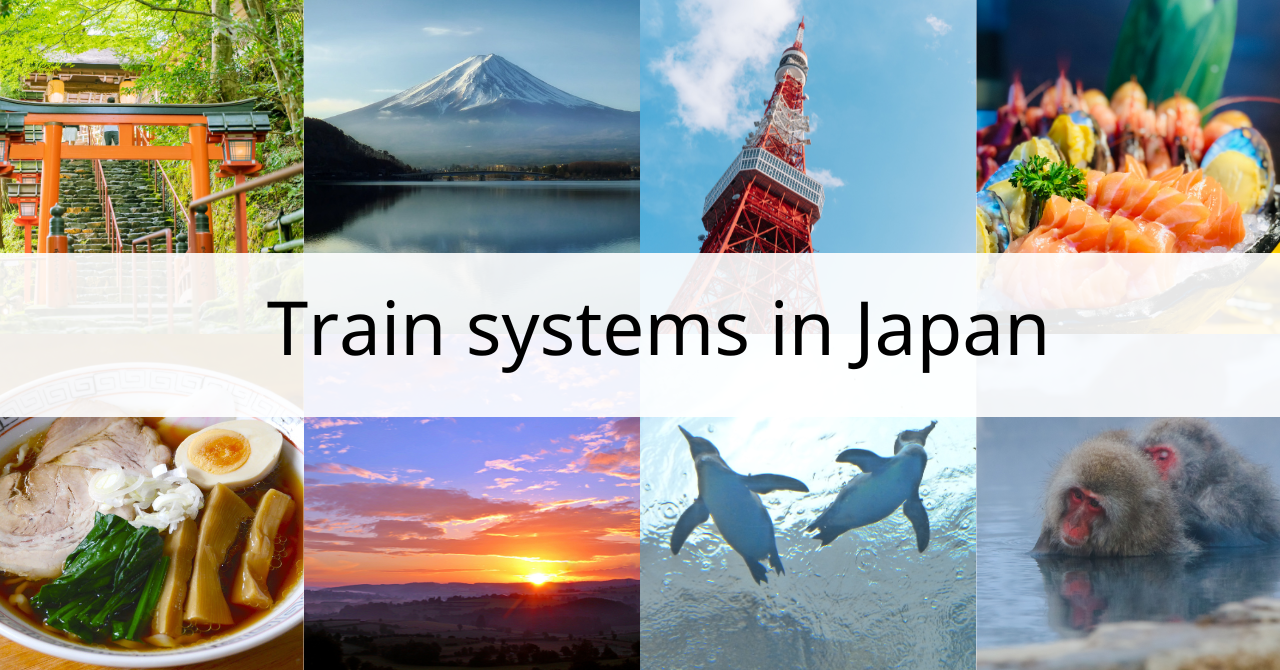When you look at transportation map in Japan, many visitors get confused. Don’t worry. Japanese people are also confused when they first come to Tokyo or Osaka. I did. Once you learn the system, it is not so bad.
When you think of Japanese train systems, generally, there are 3 types of trains.
① JR
② Non JR (Private/Shitetsu)
③ Subways
① JR
JR stands for Japan Rail and this used to be National Railways. It has extensive network throughout Japan. It was privitized and divided into 6 areas, namely JR Hokkaido, JR East, JR Central, JR West. JR Shikoku, JR Kyushu. They are different companies but you can purchase ticket at any of the JR ticket counter to all 6 JR company lines including Bullet trains (Shinkansen).
1. JR Hokkaido
2. JR East including Shinkansen from Tokyo to North and East
3. JR Central including Shinkansen from Tokyo to Shin-Osaka
4. JR West including Shinkansen from Shin-Osaka to Hakata
5. JR Shikoku
6. JR Kyushu including Shinkansen from Hakata to Kagoshima
②Non JR (Shitetsu) All other train systems are called Shitetsu, or private lines. Technically speaking, JR is also private line now but as it was national railways, we still use the term shitetsu/private lines to non JR lines.
③Subways
There are subways in big cities: Sapporo, Sendai, Tokyo, Yokohama, Nagoya, Kyoto, Osaka, Kobe, and Fukuoka.
Here are some Tips:
・When you look at transportation maps, you will see different colors and different numbers. Each line are color coded and each station has station number. For example, JR Yamanote line Shinjuku Station will be JY17.(JY stands for JR Yamanote line) and Yamanote line color is lime green. Tokyu Toyoko line Shibuya station will be TY01(TY stands for Tokyu Toyoko line) and Toyoko line color is red.
・You need to buy separate tickets for each companies. If you have mobile suica or Transportation IC card such as Suica or Pasmo, you don’t need to worry about checking the fare in advance.
・You can purchase JR tickets for all the 6 JR companies including Shinkansen (bullet trains) at any of the JR stations.
・To buy a ticket using vending machine, you need cash. You can use coins (except for \1 and \5) and all the bills. When you need to top up/recharge IC card, you also need cash. (as of 2024) For Shinkansen (bullet trains) vending machine, you can use international credit card.
・You will need a ticket/ Mobile Suica/ IC card to enter ticket gate and exit ticket gate. You can go through ticket gate that has ↑ for ticket/ Mobile Suica/ IC card. Ticket gate that says IC, only Mobile Suica/ IC card can go through.
・Fares change according to the distance traveled. You will be able to find the fare online in advance (like google maps and other navigation apps) or fare table at the station. If you are travelling with tickets and you are not sure how much the fare would be, you can buy the minimum (cheapest) ticket and adjust the fare before you go out of the ticket gate. (If you bought ticket more than you needed, they cannot refund, so if you are not sure, buy the minimum)
・Right before the ticket gate, you will find fare adjusting machine. Tap the English button and all the instruction will be shown in English. Insert the ticket and the machine will show you the additional fare needed on screen. You can put the coins or bill in the machine and you will get adjusted ticket. Use this new ticket to go out the ticket gate.
・If you need to top up/recharge the IC Card, you can do so using the same fare adjusting machine right before the ticket gate, ticket vending machine, or convenience stores. You need cash to top up.
・If you have any problem at the ticket gate, go to the gate with staffs.
・Mobile suica and Transportaiton IC cards are good for fares only. Some trains (JR long distance express/super express/ Shinkansen bullet trains) require express ticket and/or seat reservation ticket, you need to purchase express ticket in addition to fares.
・For purchasing long distance tickets, you can also use credit cards either with vending machine or ticket counters.



Comments